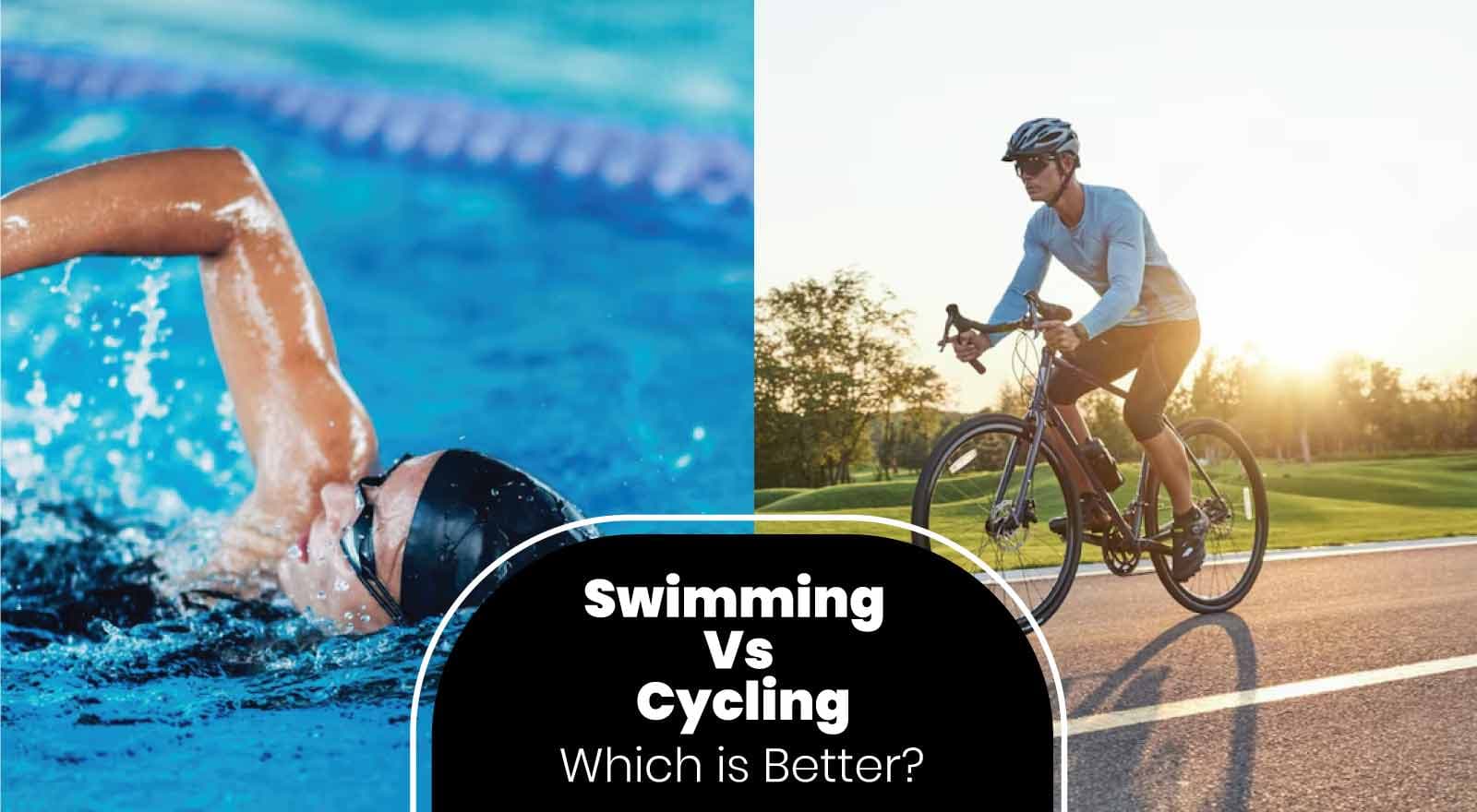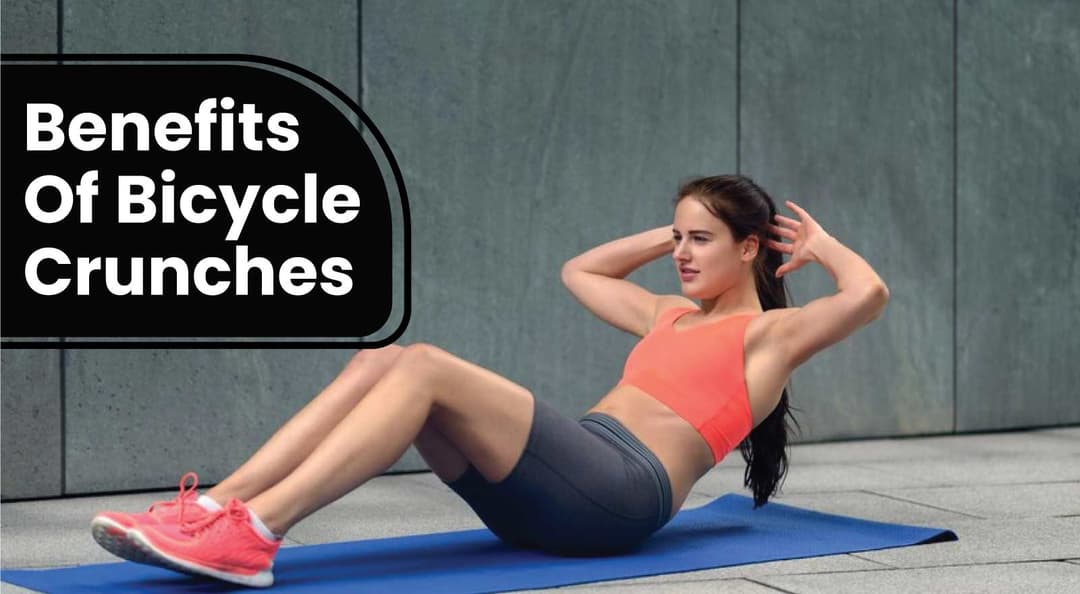Swimming vs cycling are two of the most popular workouts that keep the body strong and the mind fresh. Both burn calories, boost stamina, and build muscles in different ways. Swimming moves every part of the body, using water resistance for a full-body workout. It is gentle on the joints and great for people of all ages. Cycling, on the other hand, is perfect for building leg strength and improving heart health. It can be done indoors or outdoors, alone or in a group.
Each workout brings something unique—one glides through water, the other races across roads. Both help in weight loss and fitness, but in different styles. In this blog, let’s dive into the benefits, compare results, and find out which one suits your goals best. Whether you love water or wheels, there’s a powerful workout waiting.
Table Of Contents
- Is Swimming Better Than Cycling?
- Swimming vs Cycling: Which Is Best For You?
- Does Swimming Burn Belly Fat?
- Swimming vs Cycling: What Exercise Burns the Most Belly Fat?
- Expert’s Advice
- The Final Say
- FAQs
- References
Is Swimming Better Than Cycling?
Both swimming and cycling contribute immensely to cardiovascular health, but their methods and muscle engagement differ.
A. Swimming
Swimming offers a full-body workout, improving heart and lung function. It's especially effective for fat burning, as it engages nearly all muscle groups—arms, legs, back, and core. As a summer workout plan at home might not always include pool access, swimming remains a facility-dependent activity, but its benefits are undeniable.
The resistance of water forces the body to work harder, helping increase stamina, muscle tone, and cardiovascular efficiency. Controlled breathing in swimming enhances lung capacity, facilitating better oxygen delivery to the heart.
Swimming is also an excellent option for those seeking the benefits of swimming for males, particularly in building strength, endurance, and better posture. However, the intensity of calorie burn varies with stroke—breaststroke burns fewer calories, butterfly burns the most, and freestyle and backstroke fall somewhere in between.
B. Cycling
Cycling is more lower-body focused, targeting muscles like glutes, hamstrings, calves, and quadriceps. Whether pedalling across urban streets or up mountainous terrains, cycling burns calories effectively and improves blood circulation, heart pumping capacity, and overall lung performance.
Though not as full-body as swimming, cycling is ideal for people looking to manage weight and build leg muscle strength. It’s also a more practical option for many, as bikes are accessible, and cycling can easily be integrated into daily commutes.
Additionally, cycling is often suggested for those with larger body frames or beginners who may not yet have swimming experience or access.
Also Read: Running Vs. Swimming: Which Exercise Is Best For Your Fitness Goals?
Swimming vs Cycling: Which Is Best For You?

1. Swimming vs Cycling: Calories Burned
How many calories you burn depends on your body weight and intensity level. Here's a comparison based on a 70kg person doing 60 minutes of activity:
Cycling
- Light (16–19 km/h): 422 kcal
- Moderate (19–21 km/h): 563 kcal
Swimming
- Recreational: 446 kcal
- Breaststroke laps: 744 kcal
- Butterfly laps: 818 kcal
Though swimming vs cycling shows swimming as the higher calorie-burner per hour, it is more physically demanding. Few people swim for extended periods, while cycling can easily be sustained for hours, resulting in more total calories burned.
Water cools the body faster than air, forcing it to generate more heat, contributing further to calorie expenditure. This thermoregulation, combined with full-body engagement, makes swimming a powerful fat-burning activity.
2. Swimming vs Cycling: Muscle Building Comparison
Swimming
Swimming builds endurance and muscle tone, thanks to constant resistance from water. This not only strengthens your muscles but also improves flexibility. While not typically associated with mass gain, swimming may outperform cycling for overall muscle development due to its full-body engagement.
It can be particularly beneficial for assessing changes in body composition when paired with tools like a skeletal muscle mass calculator.
Cycling
Cycling mainly works on building lower-body strength. An uphill ride or increased resistance builds power in the legs and hips. Though not comprehensive like swimming, cycling does offer upper-body engagement when tackling difficult terrain or standing up on the pedals.
For people who prefer focused leg workouts with cardiovascular benefits, cycling might be a more effective choice.
3. Swimming vs Cycling: Risk of Injury
Both exercises are considered low-impact and joint-friendly, but each carries specific injury risks.
Swimming
Swimming is ideal for individuals with joint issues or recovering from injuries due to the buoyant support provided by water. However, repetitive strain injuries like swimmer’s shoulder, knee strain, or lower back issues can occur with poor form. Proper technique and warm-up routines reduce this risk significantly.
It also makes swimming a smart choice for people concerned about whether drinking water during exercise is good or bad, as swimmers can stay hydrated pre- and post-session without overheating due to water's cooling nature.
Cycling
Cycling is less jarring on the joints than running. Its smooth range of motion makes it an ideal option for those with knee or hip concerns. However, poor posture on the bike, prolonged gripping of handlebars, or sudden falls can cause wrist, back, or leg pain.
Whether you're cycling outdoors or indoors, some people wonder, is it okay to workout in AC? The answer is yes—air-conditioned environments can help you train longer and with more comfort, as long as hydration is maintained.
4. Swimming vs Cycling: Cost Comparison
Cycling: Requires a bike, helmet, shoes, and potentially maintenance costs. The investment can be high, especially if choosing performance bikes or advanced gear.
Swimming: Comparatively economical. A swimsuit and goggles are the only essentials, although access to a pool may involve a membership fee. Wetsuits are optional and usually not required for indoor or recreational pool swimming.
5. Swimming vs Cycling: Which is More Convenient?
Swimming | Cycling |
Accessibility is the key limitation of swimming. It depends entirely on whether you have access to a nearby pool. Public facilities or private memberships can be restrictive for some. | Cycling wins in convenience. You can ride almost anywhere—busy city streets, parks, or even trails. You can also make cycling part of your routine, like commuting, making it easier to stick with in the long term.
|
As adherence is crucial for long-term fitness, integrating activities into daily life contributes to overall consistency—one of the best mental health tips to stay motivated and stress-free.
Also Read: Gym vs Callisthenics: Which One Wins For Your Fitness Goals? Find Your Perfect Fit
Does Swimming Burn Belly Fat?
Yes, swimming is effective for reducing belly fat. As a full-body exercise, it burns calories and strengthens multiple muscle groups simultaneously. Swimming also raises your heart rate and improves your metabolic rate, causing post-exercise calorie burn (known as EPOC).
This means that even after a 20-minute swim, your body continues to burn calories throughout the day. The engagement of core muscles during strokes like freestyle, backstroke, and butterfly helps tone the abdomen specifically. Here's how swimming can help with abdominal fat loss.
- Calorie Burning: Swimming burns calories, and calorie deficits are necessary for weight loss.
- Core Engagement: Swimming engages your core muscles, especially your abs, which can help tone the stomach.
- Cardiovascular Exercise: Swimming is an excellent form of cardiovascular exercise, which is essential for fat loss overall.
In fact, swimming can be considered a powerful addition to exercises to lose belly fat at home for beginners, especially when pool access is available.
It also improves insulin sensitivity, boosts cardiovascular health, and enhances lean body mass—all contributing factors to reducing abdominal fat.
Also Read: Cycling vs. Walking: Which One Helps You Lose Belly Fat Faster?
What Exercise Burns the Most Belly Fat?
When comparing swimming vs cycling for belly fat, calorie burn is the key factor. Swimming generally burns more calories per hour due to water resistance and full-body movement. For a 70kg person:
Activity | Calories Burned (60 mins) |
Breaststroke | 744 kcal |
Front crawl | 704 kcal |
Butterfly stroke | 818 kcal |
Cycling (9–11 mph) | 422 kcal |
Cycling (11–13 mph) | 563 kcal |
However, swimming for a full hour can be demanding. For beginners or those less confident in water, longer cycling sessions might be more practical for calorie burning. Consistency, not intensity, is key in fat loss. Also, combining workouts with good hydration is crucial. Hydration improves performance, prevents cramps, and aids in fat metabolism.
Expert’s Advice
As an expert, I would recommend that you examine your present fitness level, any existing health concerns, and your comfort level with each workout before beginning any of the two. Also, consider your fitness goals and how each workout fits into them. Incorporating swimming, cycling, strength training, and flexibility exercises can give a balanced workout that targets various muscle areas. However, remember that consistency is essential with any fitness plan. To challenge your body and maintain improvement, progressively increase the duration, intensity, and frequency of your workouts.
Health Expert
Lavina Chauhan
The Final Say
In the ongoing debate of swimming vs cycling, there is no definitive winner. Both activities offer powerful cardiovascular benefits, contribute to muscle tone, support mental health, and help with fat loss.
If your goal is total body conditioning and you enjoy being in water, swimming might be more suitable. But if you're after a more practical, lower-cost, and accessible activity, cycling is the clear winner.
Ultimately, incorporating either (or both) into your fitness journey, aligned with a balanced diet, will help you stay active, healthy, and motivated.
FAQs
1. Is swimming better than running?
Swimming is often thought to be a better option than jogging for some people and situations, particularly those looking for low-impact cardio, a full-body workout, or those suffering from joint problems.
2. How long should I swim to burn fat?
To efficiently lose weight, strive for at least 150 minutes of swimming each week, spread out across 3-5 days. This can be accomplished with 30-minute swims multiple times each week. Beginners should start with shorter swims (15-20 minutes) and gradually increase the time and frequency as tolerated.
3. Which is better in the long term?
Cycling and swimming both provide considerable long-term health advantages, but they address different requirements and preferences. Swimming is a wonderful alternative for a full-body workout and is less taxing on joints. Cycling excels at increasing strength in the lower body and can be more convenient for many.
References
- https://www.welovecycling.com/wide/2021/05/18/cycling-vs-swimming-which-is-better/
- https://www.hindustantimes.com/lifestyle/health/swimming-vs-cycling-which-is-a-better-workout-for-weight-loss-101684830990820.html
- https://geekaybikes.com/blogs/news/swimming-vs-cycling?srsltid=AfmBOorhIWLL-89en5TmTNWEgrcvsVeGy0Shgtnm5qQ5QS9xlTTBaZBy
- https://timesofindia.indiatimes.com/life-style/health-fitness/weight-loss/swimming-vs-cycling-which-works-the-best-for-weight-loss/articleshow/110076092.cms
- https://www.tomsguide.com/news/is-swimming-better-for-you-than-cycling
About ToneOp Fit
ToneOp Fit is a platform dedicated to improving and maintaining good health through a comprehensive range of goal-oriented health plans with up to 3 Coach support. With a range of Weight Management, Medical Condition, Detox Plans, and Face Yoga Plans, the app also provides premium health trackers, recipes and health content. Get customised diet, fitness, naturopathy & yoga plans and transform yourself with ToneOp.









































